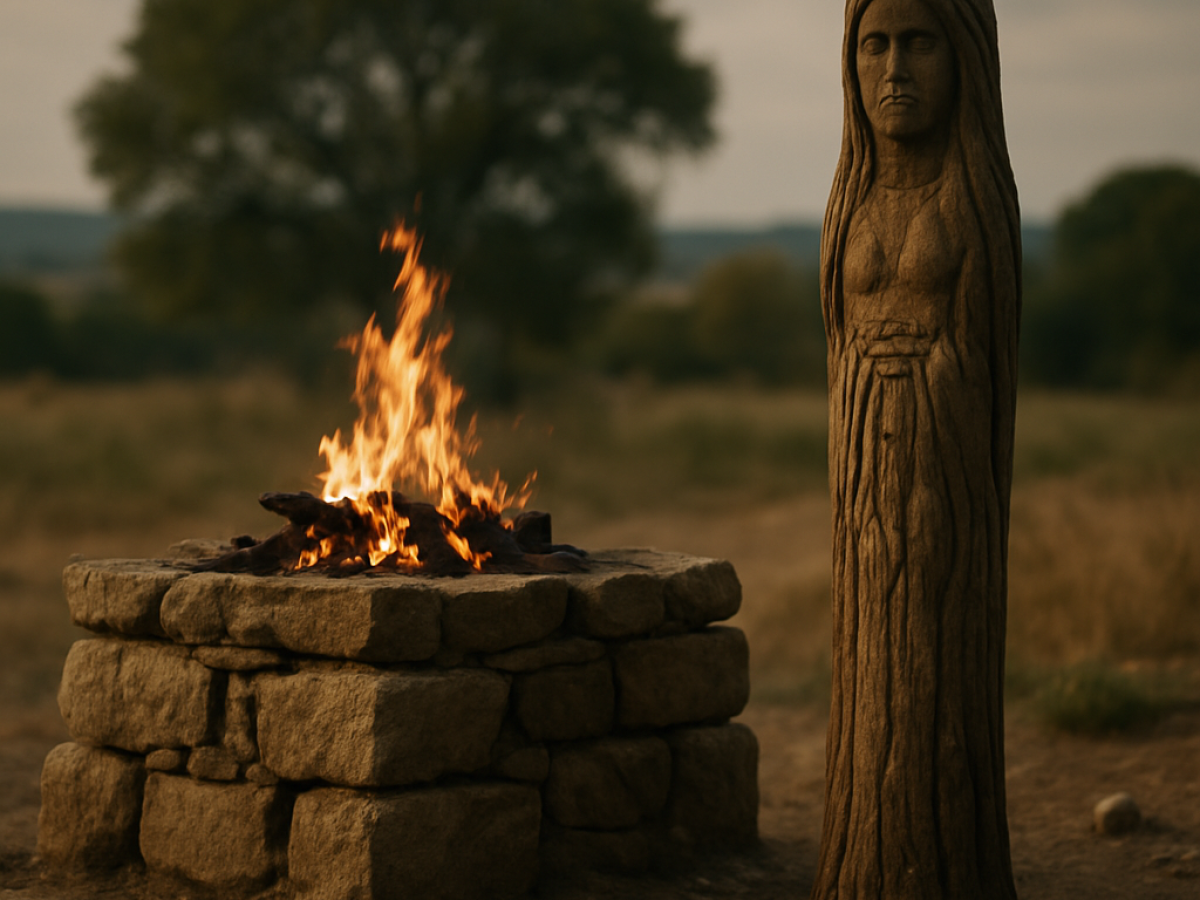
Asherah to Menorah
Deuteronomy 16:21 issues a striking command: “You shall not plant for yourself any tree, as a wooden image, near the altar which you build for yourself to the LORD your God.” At first glance it seems like an odd prohibition. But in the ancient world, it cut to the heart of how people imagined the presence of the divine.
The Pagan Practice of Sacred Trees
The nations around Israel regularly planted sacred trees or set up wooden poles, often called Asherah, beside their altars. They were symbols of divine presence, markers of sacred space, and visible signs of the axis mundi—the cosmic pillar linking heaven, earth, and the underworld. To place such a tree at an altar was to declare that this was the place where heaven touched earth—the sacred center of the world.
In the Canaanite pantheon, Asherah was the consort of El, later attached to Ba’al, and her presence was represented by these wooden images or sacred groves. Archaeology has uncovered traces of Asherah symbols even among Israelites, showing how deeply ingrained this practice was in the ancient imagination. Across the Near East, the cosmic tree motif flourished. In Mesopotamia, stylized trees of life appeared on palace walls, flanked by guardians, images of kingship and fertility. In Egypt, the “djed” pillar represented cosmic stability. In Ugarit, Asherah was tied to mountains, groves, and seas. To plant a tree by an altar was to claim that this place was aligned with the center of the universe.
Yahweh’s Exclusive Claim
But Israel’s God forbade such symbols. Yahweh would not share His altar with rival deities. He Himself was the center. His sanctuary was the true meeting place of heaven and earth. To plant an Asherah near His altar would suggest that His presence depended on the same requirements as the gods of the nations.
The Eden Connection
This prohibition cannot be understood apart from Eden. The garden itself was a sanctuary, a holy space where God walked with humanity. At its center stood two trees: the tree of life and the tree of the knowledge of good and evil. The tree of life was the true axis mundi, the living sign that God’s order and life flowed into creation. But the serpent enticed humanity to grasp at the rival tree. Instead of receiving life from God, Adam and Eve reached for wisdom apart from Him. The result was exile, chaos, and death.
The Asherah and Eden’s Rebellion
The Asherah poles of Canaan echoed the same. They were attempts to manufacture divine presence and order apart from the Creator. Planting one beside the altar would have been to reenact Eden’s rebellion. Thus Deuteronomy 16:21 was not only anti-Canaanite; it was profoundly anti-Edenic. Yahweh would not allow His altar, the place where relationship was restored, to be corrupted.
God’s Chosen Tree: The Menorah
God provided a tree of His own choosing, sanctified and set within His house. In the Holy Place of the tabernacle and later the temple stood the menorah. This seven-branched lampstand was deliberately designed as a tree, with blossoms, buds, and flowers adorning its branches. Its light burned continually, a living flame symbolizing God’s presence and His wisdom. The menorah was a stylized tree of life shining inside God’s sanctuary as a testimony that true life flows from Him alone.
The Redemption of the Cosmic Tree Motif
In this way, the menorah reversed and redeemed the ancient cosmic tree motif. Where the nations planted Asherah poles to invite their gods, Yahweh Himself placed His tree of light within His dwelling. The menorah proclaimed that life, fertility, and order come not from pagan symbols but from the Creator who sustains His covenant people.
Fulfillment in the Messiah
The story does not end with the menorah. In the New Testament, at Sukkot, the imagery reaches its fulfillment in Yeshua the Messiah. He declared, “I am the light of the world,” echoing the menorah’s perpetual flame. In John’s vision of Revelation, the risen Messiah walks among seven golden lampstands, embodying the role of divine light in the midst of His people. And at the close of Scripture, in the New Jerusalem, John sees the tree of life restored, standing at the center of God’s renewed creation, its leaves bringing healing to the nations.
The True Tree of Life
The Asherah pole promised fertility and wisdom through human effort, ritual, and myth. The menorah pointed to God’s own life-giving presence. And in Messiah, the reality comes into view: the true tree of life is restored, not as an idol planted beside an altar, but as the cross where heaven and earth meet. The cross, Rome’s instrument of death, became the axis mundi of the world—the place where sin and death were broken and where life eternal began.

Leave a Reply